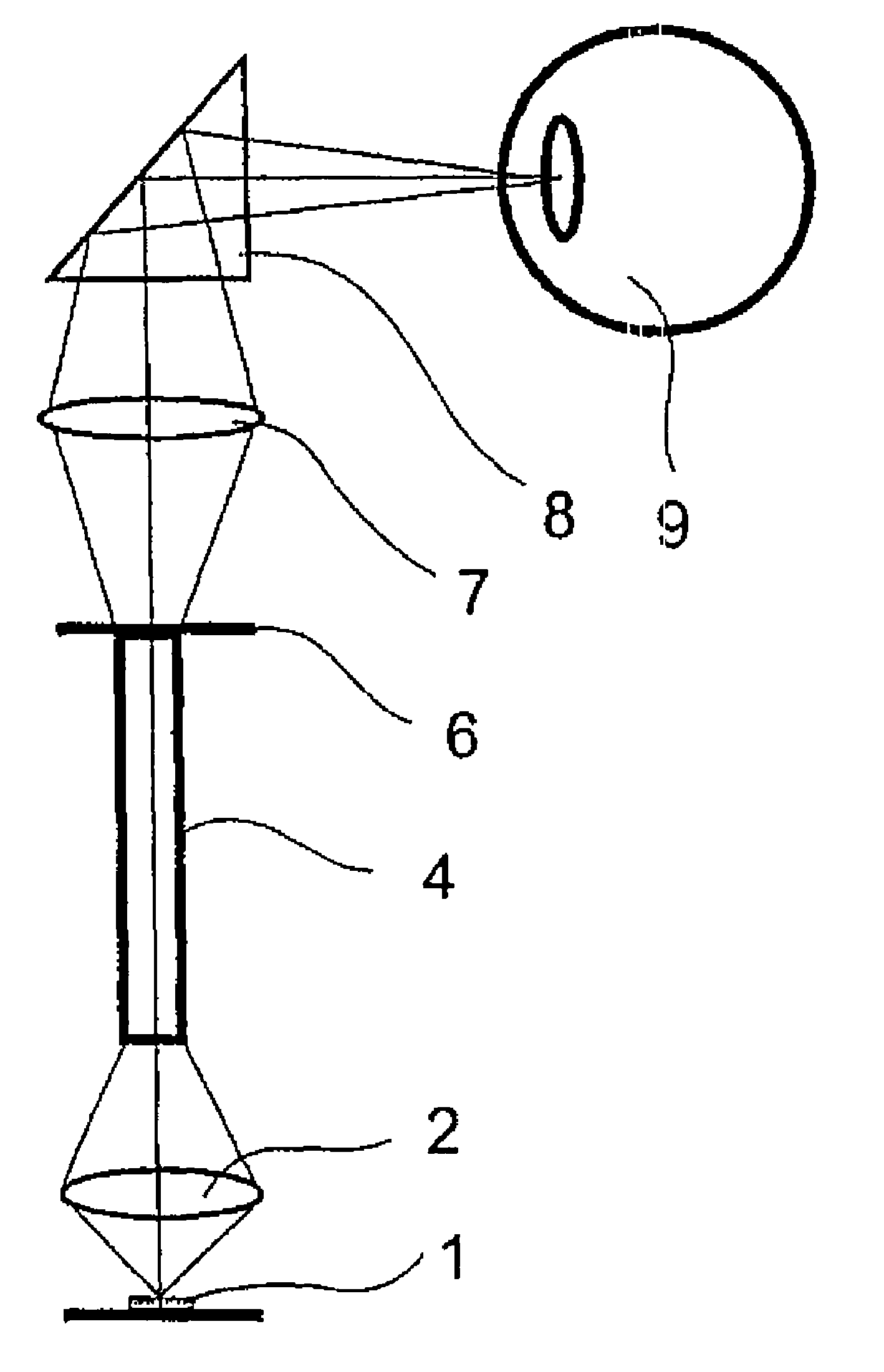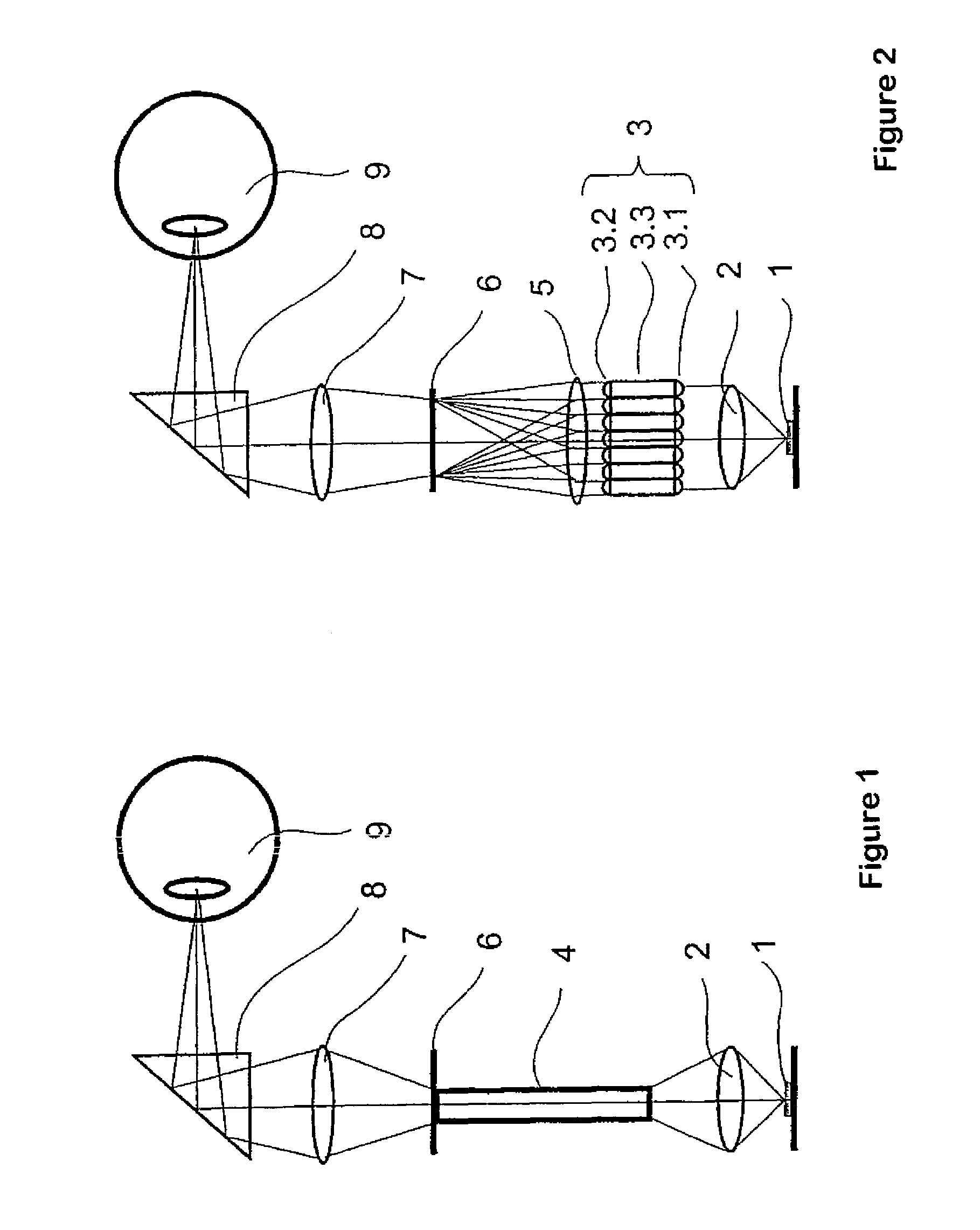Ophthalmological instrument
a technology for ophthalmological instruments and instruments, applied in instruments, medical science, diagnostics, etc., can solve the problems of difficult to achieve the effect of achieving the effect of improving the applicability of ophthalmic instruments, short switching times, and high spectral stability of switch-on emission
- Summary
- Abstract
- Description
- Claims
- Application Information
AI Technical Summary
Benefits of technology
Problems solved by technology
Method used
Image
Examples
Embodiment Construction
[0021]In the ophthalmic instrument according to the invention—which instrument has homogeneous illumination for observation and / or documentation of an eye and consists of an illumination device including a source of illumination, a homogenizing unit, and a projection device—one or more organic or inorganic sources of radiation with spectrally selective emission are used.
[0022]Controlled by a control unit, these sources of radiation generate continuous and / or pulsed spatial illumination in order to enable, via a digital camera unit, suitably adapted visual and / or digital observation, recording, or output of the examined areas of the eye.
[0023]In this case, in particular, LEDs, SLDs, lasers or O-LEDs are used individually or in combination as organic or inorganic sources of radiation with spectrally selective emission. The source of illumination preferably comprises several sources of radiation emitting in a spectrally selective manner, which have the same and / or different intensity d...
PUM
 Login to View More
Login to View More Abstract
Description
Claims
Application Information
 Login to View More
Login to View More - R&D
- Intellectual Property
- Life Sciences
- Materials
- Tech Scout
- Unparalleled Data Quality
- Higher Quality Content
- 60% Fewer Hallucinations
Browse by: Latest US Patents, China's latest patents, Technical Efficacy Thesaurus, Application Domain, Technology Topic, Popular Technical Reports.
© 2025 PatSnap. All rights reserved.Legal|Privacy policy|Modern Slavery Act Transparency Statement|Sitemap|About US| Contact US: help@patsnap.com


